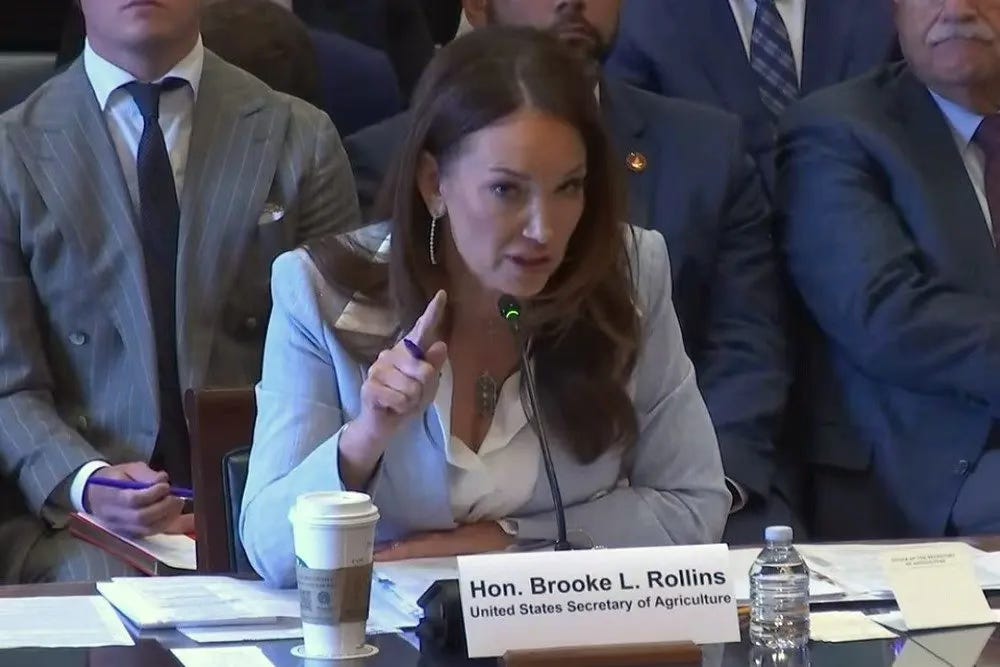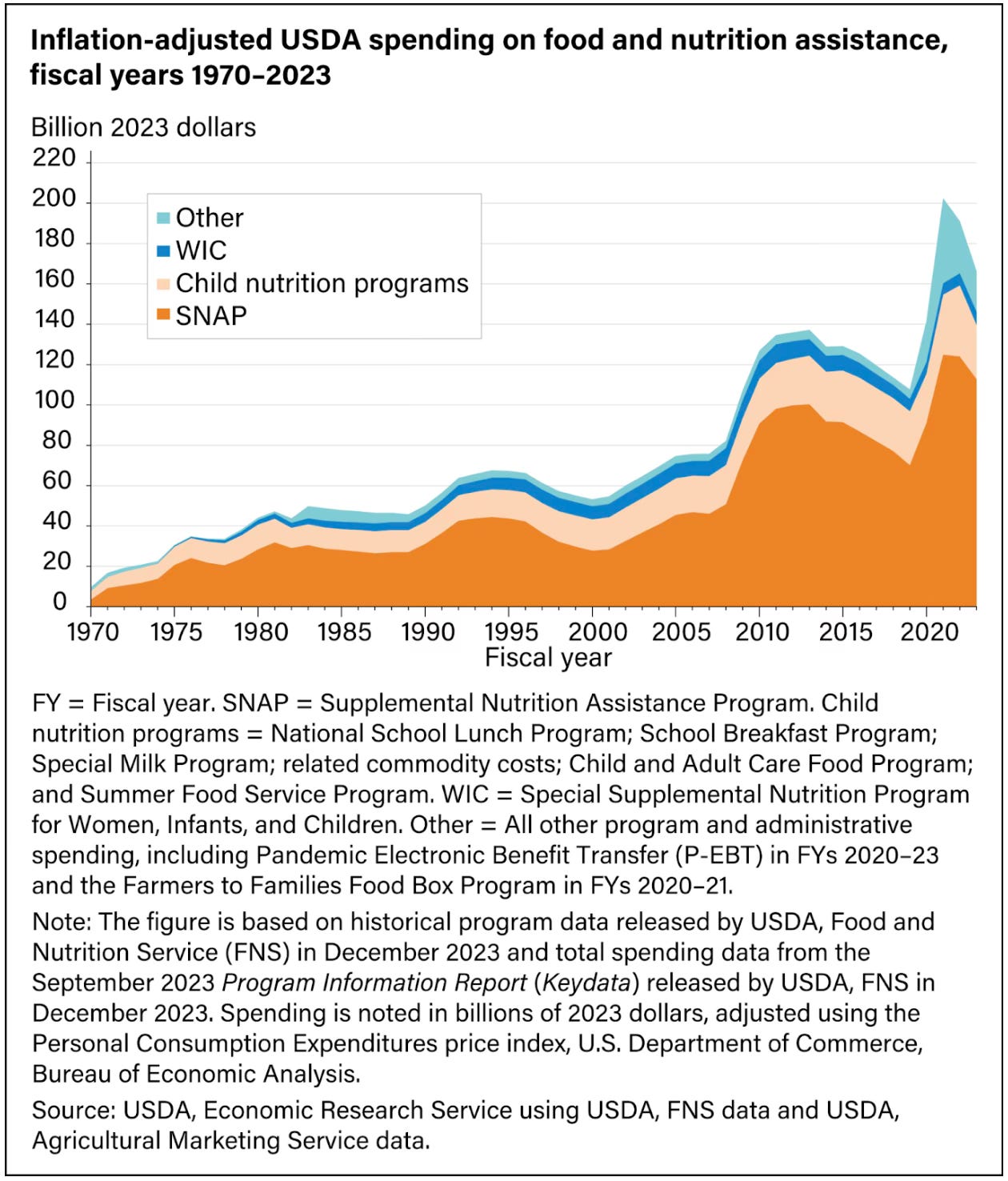Fraud, Waste, and Abuse: The Republican Party's Tall Tales About SNAP
In Their Rush to gut Social Programs to pay for More tax Cuts for the Wealthy, the GOP Won't let Facts get in the way
On Wednesday, June 11, Secretary Brooke Rollins testified before the House Committee on Agriculture during a hearing on Oversight at the U.S. Department of Agriculture. After almost five hours of questioning, Chairman GT Thompson recognized Representative Carbajal from California. After asking crucial questions about farmworkers and immigration, Representative Carbajal asked the Secretary to "...explain how proposed cuts to nutrition programs like TEFAP and SNAP benefit growers, especially when its farmers who produce the fruits and vegetables for these programs?”

In her response, the Secretary, a key appointee of the Republican administration, disseminated misinformation, creating fraudulent rhetoric and abusing her position. Her claims echo a long-standing Republican narrative that portrays essential social safety net programs, particularly SNAP, as rife with "fraud, waste, and abuse" to justify proposed budget cuts. The Secretary claimed that across 16 nutrition programs, $400 million a day is spent, and of that, 30% constitutes fraudulent payments.
Let's break this down and fact-check her response, and examine how these specific claims align with broader Republican talking points:
“USDA has 16 different nutrition programs” - TRUE
USDA’s Food and Nutrition Service or FNS administers 16 nutrition assistance programs:
WIC Farmers Market Nutrition Program
Senior Farmers Market Nutrition Program
Nutrition Assistance Program for Territories
SNAP
WIC
Child and Adult Care Food Program
Fresh Fruit and Vegetable Program
National School Lunch Program
School Breakfast Program
Special Milk Program
SUN Meals (Summer Food Service Program
SUN Bucks (Summer EBT)
Commodity Supplemental Food Program
Food Distribution Program on Indian Reservations
The Emergency Food Assistance Program
Disaster Assistance
“ about $400 million a day [is spent on nutrition assistance]” - FALSE
According to the Economic Research Service, spending on food and nutrition assistance programs decreased by 13 percent from 2022 to 2023, with 2023 spending totaling $166.4 billion. While USDA does not publish a per-day spending figure on nutrition assistance, we can create a rough estimate:
$166.4 Billion ÷ 365 Days = $455.9 Million
Daily spending at USDA is closer to $450 million a day on food and nutrition programs.
“Up to 30% of that [$400 million] is fraud waste and abuse” - FALSE
According to the Center for Budget and Policy Priorities
State error rates are composed of both overpayments and underpayments. This means that any recorded percentage will, in part, cover payments where participants should have received more benefit. In a state-by-state breakdown, the Center for Budget and Policy Priorities identifies the 2023 State Combined Payment error rate. Nationwide, the 2023 Combined Payment Error Rate was 11.68%, which was the lowest error rate between 2003 and 2023. While the Secretary’s "up to" is intentionally vague, creating the false narrative that food assistance programs have an error rate of 30% is unacceptable. Furthermore, the Secretary perpetuated the idea that all of the claimed "30%" represents overpayments, which is simply false considering the calculation to determine error rates includes underpayments.
For example in 2022, the SNAP overpayment rate alone was 9.84 % nationwide which is up from the last pre-pandemic year. The same year, the underpayment rate was 1.7% which is also an increase from the last pre-pandemic year. Based on FNS’s own reporting, most erroneous payments are made as a result of unintentional mistakes made through the eligibility process - not fraud.
Republicans claiming that a zero percent error rate is the only acceptable outcome and that by doing this savings will total roughly $230 billion dollars is also inaccurate. Based on 2022 spending (which was higher than 2023) USDA spent $183.0 on nutrition assistance. Knowing that 2022 error rates were 9.84 for over payments. You could assume that the “savings” or getting that error rate to zero would be 9.84% of $183 billion (or $18.0072 billion) this is woefully below the Republican's target of saving $230 billion in the budget. This alone should demonstrate that the goal is not to eliminate erroneous payments, the goal is to find money for tax credits.
While this portion of the hearing was very brief, this line of rhetoric is dangerous. It directly serves the Republican Party's broader agenda of undermining public trust in government safety nets to justify cuts that disproportionately impact vulnerable populations. Creating unnecessary doubt within the government system pits neighbors against each other and destroys communities. Public officials must present the truth, specifically as part of an oversight hearing on the Hill. Addressing errors in government programs is absolutely something that should be addressed; however, discussing errors as they truly exist – encompassing both under- and overpayments – is vital for the transparency of the federal government and for countering misleading political narratives.






